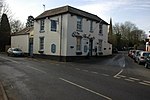Dumbleton

Dumbleton is a village and civil parish in the Tewkesbury district, in the county of Gloucestershire, England. The village is roughly 20 miles from the city of Gloucester. The village is known to have existed in the time of Æthelred I who granted land to Abingdon Abbey, and it is mentioned in the Domesday Book.Dumbleton is on the edge of Dumbleton Hill, a foothill of the Cotswolds and is within the Cotswolds Area of Outstanding Natural Beauty. Dumbleton is mainly residential with facilities including a Village Hall from 1899, a successful Cricket Club (National Village Cup Winners 2022), a Social Club, Garden Club, Infants’ School (temporarily closed as of September 2022) and an Estate Office. The village also contains the main entrance to Dumbleton Hall, which now functions as a hotel.The civil parish includes the village of Great Washbourne which was separate civil parish until 1935. From 1935 to 2023 Wormington was also part of Dumbleton until the parish was split following a Community Governance Review.
Excerpt from the Wikipedia article Dumbleton (License: CC BY-SA 3.0, Authors, Images).Dumbleton
Garden Close,
Geographical coordinates (GPS) Address Nearby Places Show on map
Geographical coordinates (GPS)
| Latitude | Longitude |
|---|---|
| N 52.02242 ° | E -1.97809 ° |
Address
Garden Close 8
WR11 7TT , Dumbleton
England, United Kingdom
Open on Google Maps











